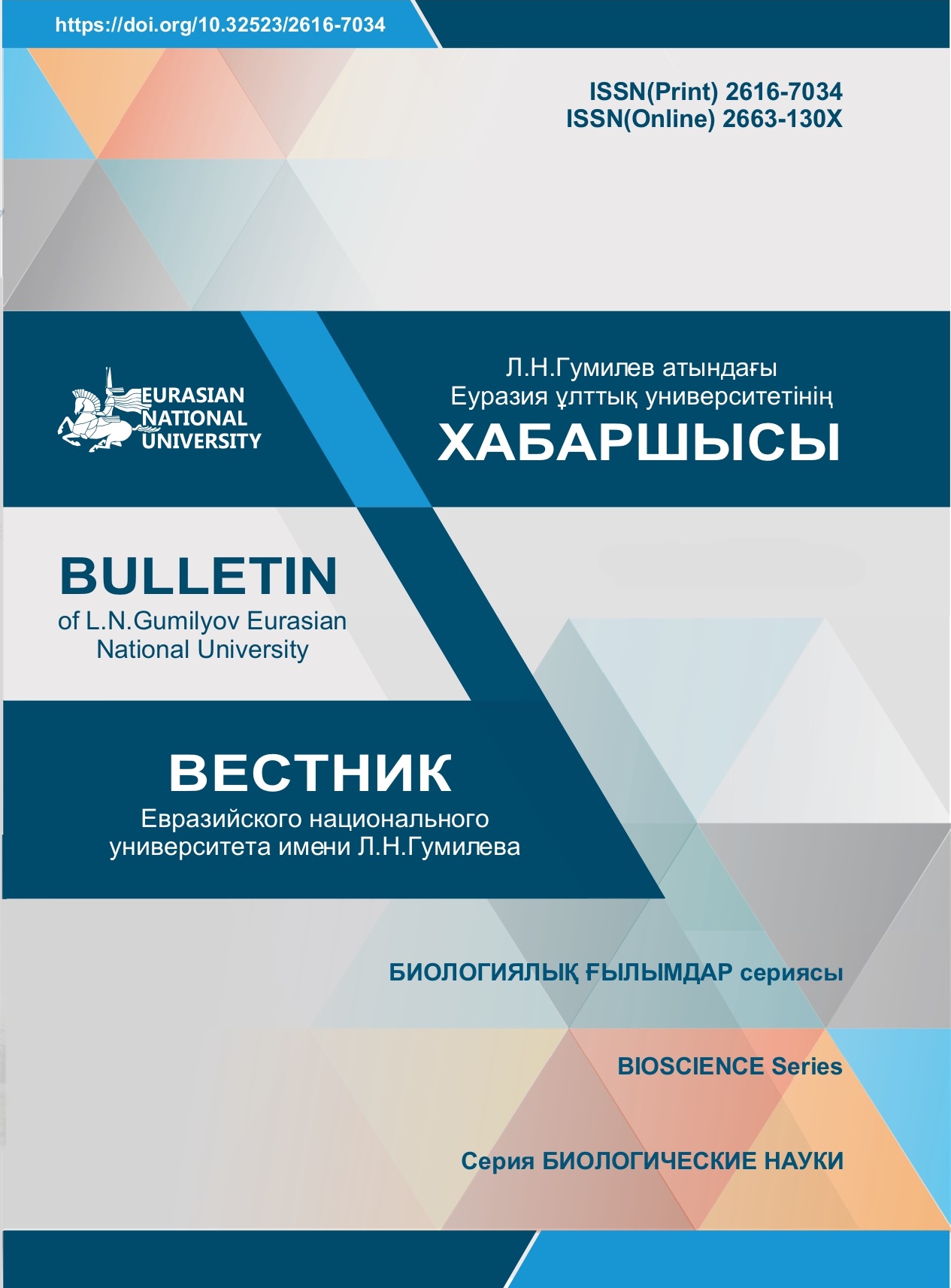Analysis of Group-Thicket Communities on Iron Ore Industry Dumps in Kostanay Region
Views: 192 / PDF downloads: 223
Keywords:
group-thicket community, iron ore industry dumps, biodiversity, technogenic landscape, succession, syngenesis, dump flora, dump overgrowthAbstract
Environmental anthropogenic transformation leads to technogenic landscapes emergence, characterized by complete or partial destruction of ecosystem components. Partial restoration of biodiversity is possible through reclamation and self-overgrowing. Formation of vegetation cover on technogenic landscapes – a process that takes place in three syngenesis stages. This article presents the results of studying the degree of self-overgrowing on iron ore industry dumps in the Kostanay region (SSGPO JSC and Kachary Ruda JSC) at the stage of a group-thicket community – the second stage of syngenesis. Sixty-three geobotanical descriptions were compiled, and group-thicket communities were found in twenty-six.
A group-thicket community is usually formed by patients; certain relationships and mutual influence appear between plants, but they remain fragmentary, individuals are slightly interconnected trophically. The predominance of species with a wide ecological amplitude characterizes this stage.
It was found that the rate and patterns of vegetation cover formation at the second stage of syngenesis differ on saline and non-saline soils: the former are dominated by halophytes and long-rhizomatous plants, the latter are characterized by long-rhizomatous plants; moreover, the activity of species on the first soils is much higher than on the second ones, the number of species is approximately the same on both soil types.








